Effectiveness of Collaborative Working Methods Employed by a Civil Engineering Organisation
Info: 7694 words (31 pages) Example Dissertation Proposal
Published: 31st Jan 2022
Tagged: Civil Engineering
Contents
Click to expand Contents
1.0 Chapter 1
1.1 Introduction
1.2 Rationale
1.3 Research Question
1.4 Aim
1.5 Objectives
2.0 Methodology
2.1 Introduction
2.2 Research Plan
2.3 Research Strategy
2.4 Mixed Method Research
2.5 Methods of Data Collection
2.6 Sampling
2.7 Chapter Summary
Chapter 3. Proposed structure of the dissertation
4.0 Limitations
5.0 References
6.0 Bibliography
Chapter 1: Introduction
1.1 Introduction
Poor collaboration is one of the many problems faced by the construction industry today (Bouchlaghem, 2012). It is widely recognised that the construction industry must embrace change, by adopting new ways of working to enable it to remain competitive in a global market and meet the required needs and demands of the clients (Bouchlaghem, 2012).
In the United Kingdom (UK) back in 1990’s, Latham (1994) and Egan (1998) both highlighted the construction industry’s inefficiency and performance. Their reports identified that the construction industry was suffering from fragmentation and was consistently performing in a manner which was thought to be wasteful; the general perception of the industry was that it did not deliver good value to the end customers.
Change was therefore required, and recommendations were written by both Latham (1994) and Egan (1998), which advocated for cultural shift from traditional adversarial and confrontational approaches to the one’s that are more collaborative i.e. sharing of information and knowledge, alliancing, framework agreements, partnering to full integrated team work (Constructing Excellence, 2009). Egan (1998, p. 3) also issued a “challenge to the construction industry to commit itself to change, so that, working together, we can create a modern industry, ready to face the new millennium”.
1.2 Rationale
Seven years ago, in 2009, a report was released by Constructing Excellence. The aim of the report was to look at the progress made by the construction industry since the publication of ‘Rethinking Construction’ (Egan, 1998) and to explain the improvement agenda for the next ten years (Constructing Excellence, 2016). The report revealed that although there has been a significant improvement in the industry over the years, the improvement simply has not been on as large a scale as initially anticipated (Wolstenholme, 2009). The problem the study has revealed is that often the commitment by parties involved is not profound. When initiating a brief investigation you tend to discover many designated partners tend to avoid or make full use of risk to enable them to maximise their own profits, rather than finding ways to distribute the risk evenly and genuinely collaborate so that all involved could benefit from the project (Wolstenholme, 2009).
Constructing Excellence (2011, p.2) defines Collaborative Working (CW) as “working together in a seamless team to common objectives that deliver benefit for all through mutually-beneficial (i.e including commercial) alignment”. Although this is easy to comprehend, it is a highly complex and challenging task to achieve. The reason why it is challenging is because the industry is highly fragmented (Shen et al., 2009). On a typical construction project there are numerous stakeholders involved i.e owner, designers/consultants, main contractor, sub-contractors and suppliers. Bringing all these parties together to establish a common goal and to share risk often proves to be difficult. This is because traditionally and generally, the majority of these stakeholders involved in the project have different interests and no motivation to work together voluntarily. Often this is due to the fact that the stakeholders tend to pursue the benefits that maximise their own selves and disregard others (Xue et al., 2010). This also corresponds with (Wolstenholme, 2009) findings. This is further reinforced in research by Akintoye and Main (2007), who found collaborative working relationships tend to be customer driven, taking small consideration for competitors, subcontractors and suppliers. Although morally right, collaborative relationships must take into account every party involved and has to benefit all. Fragmentation in the UK construction industry came about as a result of highly inconsistent workloads, which then allowed subcontracting to develop creating flexibility to deal with these workloads and the result of all this is lack of continuity and complex contractual relationships (Broft et al. 2016).
Another theme discussed in the Wolstenholme Report (2009) is those companies who claim to be in a partnership still attempt to keep the profits to themselves through transferring the risk down the supply chain rather than sharing profit and in effect eliminating risk for the whole team. Many also believe the idea of collaboration, partnering or alliancing is patchy as the benefits do not reach to the supply chain (Wolstenholme, 2009). It is clearly evident that passing on the risk downwards in the supply chain is still a recurrent theme in the construction industry “contributing to a reduction of levels of cohesion” (GOV.UK, 2013, p.5). This may be because organisations like to maintain a competitive edge over their competitors.
Construction projects also depend on collaborative working amongst a wide range of different professionals. These professionals tend to only work together for a relatively short period of time whilst designing and delivering the project. The whole process tends to be traditional, based on a sequential approach in which many of the team members work independently from one another yet make decisions that affect others (Bouchlaghem, 2012). But the reason why they work independently may be because they are made to work in silo environments, developing silo mentality and ‘us against them’ attitudes. It might even be the case that silo mentalities are developed even before we have joined the industry whilst being in university due to the lack of cross-disciplinary learning, one of the themes mentioned in Wolstenholme Report (2009). Due to the complexity of the industry, the industry bodies are also sitting in silos i.e. RICS, CIOB, ICE etc. This makes it harder to see the bigger picture as “not only are the key messages from different industry bodies diluted, they are often contradictory” (GOV.UK, 2013, p.28).
Sometimes despite an organisations attempt to promote a collaborative working culture within the organisation, problems might occur in that the members that work for the organisation may tend to be adversarial in their nature and within the working practices (Thomas and Thomas, 2005). Also the personalities of the individuals involved in a project or working within an organisation may make them react to each other in ways that can be destructive (Whitfield, 2012). Conflicts may therefore arise between individuals involved and those who are often involved in a conflict may adopt a hard adversarial attitude, as they may not want to be seen as a weak individual (Whitfield, 2012). Age may also play a factor to unchanging attitudes in construction (Akintoye and Main, 2006), as younger workers may see the world differently to those that are older (Farrell, 2011). It may be the case that the older generation, who have been used to working in a certain way (adversarial), may not necessarily welcome the change and therefore may promote non-collaborative approaches to the younger generations.
If the construction industry is set to achieve the Construction 2025 vision (HM Government, 2013) it is important to understand the effectivenss of collaborative working methods in an organisation.
1.3 Research Question
How effective are collaborative working methods within a civil engineering organisation?
1.4 Aim
To evaluate the effectiveness of collaborative working methods employed by a civil engineering organisation.
1.5 Objectives
Objectives are illustrated below in Table 1.
| Table 1. | |
| Objectives | Methods to achieve objectives |
|
Literature review/questionnaire. |
|
Literature review/ semi-structured interviews. |
|
Literature review/ questionnaire. |
|
Literature review/ semi- structured interviews. |
Initially the researcher will undertake a thorough literature review will involve reading primary sources such as academic research journals, government publications and secondary sources such as textbooks on the subject area. This will generate questions on the effectiveness of collaborative working methods.
Chapter 2: Methodology
2.1 Introduction
This chapter sets out to establish the different research methods that are available and can be used by the researcher. The research methodology will help the researcher to achieve the aim and objectives of this dissertation by using primary (to be collected) and secondary (existing literature) data collection. The researcher will also explain the rationale for selecting the specific research method for the study.
2.2 Research Plan
Having established the purpose of the study and having conducted an extensive literature review on the topic of CW, now it is important for the researcher to establish a plan (strategy) for the research in detail (Naoum, 2013). The plan will allow the researcher to get from ‘here’ to ‘there’, ‘here’ refers to the questions deriving from the literature review that must be answered to get to ‘there’ to be able to draw a conclusion (Naoum, 2013). To get from ‘here’ to ‘there’ will require a lot of work to go in between i.e. such as collecting and analysing the gathered data (Yin, 1994). The researcher has to bear in mind that they are working under an important constraint (limited time) hence the speed of the responses will be crucial to the success and the quality of this dissertation, thus, a regimented plan is required.
2.3 Research Strategy
Denscombe (2014, p.3) states, “a strategy is a plan of action designed to achieve a specific goal” to do so an appropriate strategy should be employed by the researcher for a positive end result (answering objectives and aim). There are two research strategy methods available to the researcher to obtain the primary research, one is ‘Qualitative’ and the other is ‘Quantitative’ (Naoum, 2013). The selection of the appropriate strategy is solely dependent upon the motive, type of the research and the availability of the necessary information (Naoum, 2013). Both strategies are neither good or bad, but have their differences (Bryman, 2008). The researcher therefore must consider how useful and appropriate the information gathered will be to the study (Denscombe, 2014). Hence, prior to selecting an approriate strategy the researcher will assess the differences of the two available research strategies.
2.3.1 Qualitative Research Strategy
Qualitative research is subjective (interpretivism), meaning it is based on personal feelings, opinions which are often verbally expressed (written or spoken) by humans (Naoum, 2013). The qualitative research has two divisions, specifically, exploratory and attitudinal (Naoum, 2013). The exploratory strategy is often employed when the researcher has little knowledge in the specific subject area whilst attitudinal research in contrast is utilised subjectively (Naoum, 2013). As the attitudinal research is subjective, seeking to obtain insights and understanding of humans views, opinions, beliefs on the topic area the gathered information tends to be rich and detailed (Fellows and Liu, 2008). Farrell (2011, p.101) states that “interviews are often the data collection technique used in qualitative data analysis”. Although interviews are frequently used as a ways of collecting qualitative data there are also other ways and these are illustrated in Table 1.
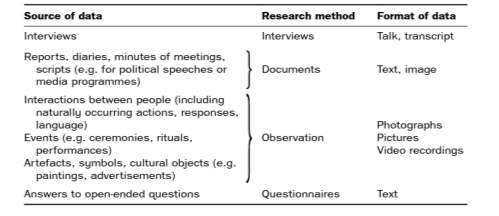
Table 1: Types of quantitative data from Denscombe (2014, p.250)
2.3.2 Quantitative Research Strategy
Quantitative research on the other hand is objective in its nature (positivism), it involes testing a theory or a hypothesis (Denscombe, 2014). It can be measured using numbers and analysed through statistical procedures which can help to determine if the theory or hypothesis holds true (Cresswell, 1994, cited in Naoum, 2013). As the information gathered in quantitatve research is in a form of numbers, consequently, it is not abstract, thus, this data is regarded to be as hard and reliable amongst researchers (Bouma and Atkinson, 1995, cited in Naoum, 2013). Research methods which are otfen used for the quantitative research are questionnaires but apart from questionnaires there are also other ways of collecting quantitative data (Denscombe, 2014). Other alternative sources of quantitative data to questionnaires are illustrated in Table 2.
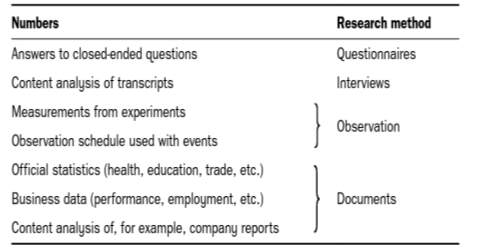
Table 2: Sources of quantitative data by Denscombe (2014, p.250)
2.3.3 Differences of Qualitative and Quantitative
Briefly speaking, quantitative research strategy uses ‘numbers’ whilst qualitative research uses ‘words’ for data collection (Denscombe, 2014). Bryman (1998, cited in Naoum 2013, p.44) highlights some of the other important differences of the two research strategies (refer to Table 3).

Table 3: Differences of quantitative and qualitative researches.
It is evident that both qualitative and quantitative research strategies have their differences both having their own strengths and weaknesses (Amaratunga et al., 2002). Thus, this makes it hard for the researcher to choose between either of the research strategies.
2.4 Mixed Method Research
McGrath in his research (1982, cited in Amaratunga et al., 2002, p.20) highlights that “there are no ideal solutions, only a series of compromises” when selecting a research strategy. Ideally, the research community strongly suggests the use of both strategies (quantitative and qualitative combined) to form a ‘Mixed Method Research’; it is perceived that good researches often use parts of both strategies (Amaratunga et al., 2002). Both strategies combined would then be complimenting each other rather than being incompatible alternatives (Denscombe, 2014). The findings of both strategies can then be checked against one another and compared/contrasted to existing literature, a process called ‘triangulation’ (Fellows and Liu, 2008). Where the data is found to be similar, it will give the researcher better confidence in the accuracy of acquired data (Denscombe, 2014). Thus, mixed method research will help to answer questions that may not be answered by qualitative or quantitative approaches alone (Creswell and Plano-Clark, 2007).
2.5 Methods of Data Collection
There two ways a researcher can obtain data is through fieldwork, this is regarded as being ‘primary data’ and the other way is through desk study, this is regarded as a ‘secondary data’ (Naoum, 2013). Primary data is regarded being ‘new’ produced through the effort of the researcher in numerical or word format and is specifically used for the researcher’s study (Farrell, 2011). Methods for obtaining primary data are, questionnaires, interviews, observation, and case studies all being gathered first-hand by researcher. This can be a time-consuming process requiring a lot of planning and preparation (Denscombe, 2014). Whilst the secondary data is what exists already (stats or descriptions) and this can be collected from other existing credible sources i.e. books, journals, articles, industry reports, government publications, construction institution bodies etc. (Farrell, 2011). Secondary data is useful when working under time, money constraints, providing quick answers to questions and the data can also be of higher quality than primary data (Naoum, 2013). Another benefit of secondary data is that it can be useful as a comparative tool (new data compared to existing) to examine similarities or differences of the data (Naoum, 2013). Table 4 illustrates survey distribution methods that are available to the researcher.
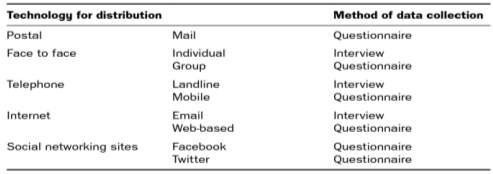
Table 4: Survey distribution methods by Denscombe (2014, p.9).
2.5.1 Questionnaires
Questionnaires are regarded as a passive approach and are often utilised by researchers due to its administrative ease and quick turnaround (useful working under a limited time frame) of receiving data to asked questions (Farrell, 2011). Questionnaires can be designed, structured both for qualitative and quantitative data (Denscombe, 2014). The researcher may use close-ended questions to collect quantitative data for quick and easy responses (Fellows and Liu, 2008). According to Fellows and Liu (2008, p.154) “closed questions have a set number of responses”, these can be decided by the researcher. Another common way of gathering quantitative data is through ordinal data (five-point scale) which is known as the Likert scale (Denscombe, 2014). Likert scale as shown in Table 5 helps to illustrate (attitude) how positively or negatively respondents feel towards given statements i.e. expressing their views, opinions (Farrell, 2011). To avoid uncertain responses, it is advised to not have too many neutral choices (Likert scale) as most respondents may be inclined to quickly answer and opt for an easy option without properly considering the statement (Oppenheim, 1992). Close-ended questionnaires often have a higher sample/response rate due its ease to answering questions (Naoum, 2013). Whilst qualitative data is based on open-ended questions which are answered (using words) in a greater detail which is time consuming (Fellows and Liu, 2008).

Table 5: Likert scale by Denscombe (2014, p.251).
2.5.1.1 Questionnaire Distribution
Both qualitative and quantitative questionnaires can be distributed by e-mail, through online surveys or by using post. As most organisations have access to the internet the researcher feels that this is the right and best method to be utilised. This is because the web provides the quick speed of construction and distribution of surveys (saving time), they are mostly free of charge and are environmentally friendly requiring no need for travel or usage/waste of paper (Denscombe, 2014). In contrast the postal service can be time-consuming, not environmentally friendly, and expensive with the possibility of data loss occurring in transit.
2.5.1.2 Piloting Questionnaires
When a questionnaire has been constructed by the researcher it should never be a final piece from the first go. This is because what has been designed by the researcher may be clear to him but may not necessarily be the case with those who are reading it (Farrell, 2011). Therefore, it is often advised to carry out a trial run to a small selection of people before gathering the final data from all the intended sample (Naoum, 2013). Thus, piloting should help the researcher to identify any flaws in the questionnaire and help to see whether it is valid or not (Farrell, 2011).
2.5.2 Interviews
Interviews are a good way of collecting qualitative data and is considered being an a exploratory, proactive approach where the researcher personally arranges, meets and conducts interviews with interviewee’s (Farrell, 2011). There are various types of interview techniques (structure of questions) which are available to the researcher, namely, ‘unstructured’, ‘semi-strucutred’ and ‘structured’ these are further explained in Table 6 and the advantages/disadvantages of interviews are identified in Table 7 (Denscombe, 2014). Generally sample rates for qualitative data are usually low therefore the researcher must carefully select the potential interviewees to get an increased response rate (Farrell, 2011).
2.5.3 Good Practice (always inform the interviewee’s)
Prior to any primary data being gathered those who will be subjected to the study (relevant industry professionals) will be informed by the researcher to avoid intrusion of privacy through gaining ethical committees and interviewees consent. Prior to undertaking any primary research the researcher will explain who they are and what the purpose of the study is etc. to the interviewees please refer to Appendix A & B (Denscombe, 2014).
Table 6: Types of Interviews (Naoum, 2013), (Denscombe, 2014) and (Fellows and Liu, 2008)
| Type | Explanation |
|
The questions are usually very open, allowing the participant to determine the direction of the interview through their responses. |
|
This approach is a bit more formal with specific topics prepared by the researcher to discuss at the interviews, can use both closed and open questions allowing the respondent to elaborate and stray into other areas which were not considered by the researcher. |
|
This type of interview is usually very stringent with the researcher knowing exactly what he wants to question the participant. The questions are precisely ordered and do not allow the interviewee to stray off topic. |
| Table 7: Advantages and Disadvantages of Interviews (Cottrell, 2014) | |
| Advantages | Disadvantages |
|
1. Only a few can be undertook. |
|
2. They are time consuming (construction) and intensive (only a short period of time may be agreed by the interviewee). |
|
3. Results cannot be generalised. |
|
4. It may be hard to find the required participants for the study. |
2.6 Sampling
Construction industry employs around 3 million people in the United Kingdom (Claeys-Jackson, 2017). Sampling allows the possibility of producing fairly accurate findings without the requirement of having to gather data from every single person in a research population i.e. around 3 million people (Denscombe, 2014). The proposed respondents will be non-arbitrary (purposeful sampling) with relevant experiences to provide pertinent information, views, opinions on the chosen study (Creswell and Plano-Clark, 2011). The organisation and the respondents will preserve their anonymity, to encourage openness (Farrell, 2011). Various junior and senior roles from one civil engineering organisation will be questioned for primary research this should hopefully reduce risk of bias i.e. long-term employees may have differing views to those who have worked short-term in the organisation or similarly management staff may have different views to site staff vice versa.
2.7 Chapter Summary
Having examined various strategies available and their advantages/disadvantages including their limitations. The researcher has decided to utilise a mixed method research (Qualitative and Quantitative) for primary data collection for the study. For qualitative data the researcher will ethically conduct semi-structured interviews with open ended questions allowing the interviewees to stray into areas which may not have been considered by the researcher whilst covering the required set topics. For quantitave data the researcher will utilise the internet to construct a web survey (google forms) predominantly consisting of closed-ended questions with predetermined answers (Likert scale).
To increase the response rate the web survey will be constructed in a way that it doesn’t take up a lot of time to complete (short and concise). Before granting the access to the quantitative questionnaire to a wider audience, it will be trialled (pilot study) on few relevant people first, similarly qualitative strategy will also be trialled through unstructured telephone interviews helping to test the validity of the main study. Researcher having gathered the primary data will compare and contrast these to secondary data (reviewed in Chapter 2) in Chapter 4 (triangulation). Taking all of the above into consideration it is appropriate to conduct 15 interviews and 50 questionnaires. The targeted audience is illustrated in Appendix C and D. The researcher acknoledges the fact that low quantity of respondents will not povide general agreement of the whole construction industry but this provides a good foundation for further future research. Figure 1 designed by the researcher illustrates the structure and the progression of the thesis.
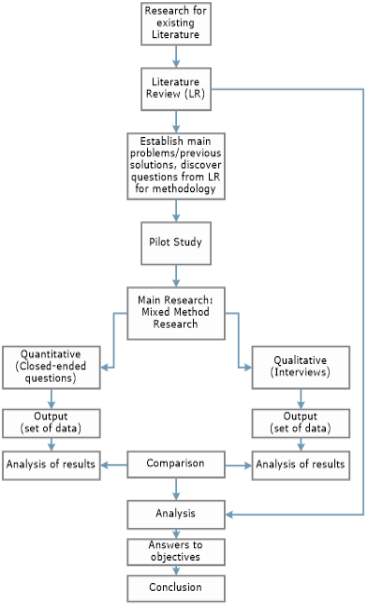
Figure 1: Process flow chart for the research illustrates the structure, progression
Chapter 3: Proposed structure of the dissertation
Chapter 1: Introduction (Approximately 1500 words).
Chapter 2: Literature Review based on objectives (Approximately 3000 words).
Chapter 3: Methodology (Approximately 1500 words).
Chapter 4: Findings/Analysis (Approximately 3000 words).
Chapter 5: Conclusion- Reflecting aim and objectives (Approximately 1500 words).
4.0 Limitations
Study is limited to one case study (organisation). Responses may be affected by company policy, therefore the results attained may not truly represent individual’s true views on collaborative working.
5.0 References
Akintoye, A. and Main, J., 2006. Perception on success and failure factors for construction collaborative relationships. In ed. Dulami, M., Sustainable Development through Culture and Innovation. Proceedings of the Joint International Conference of Construction Culture, Innovation and Management [Online]. pp. 543-555. Available at: http://www.irbnet.de/daten/iconda/CIB4453.pdf [Last Accessed: 21st October 2016]
Akintoye, A. and Main, J., 2007. Collaborative relationships in construction: the UK contractors’ perception. Journal of Engineering, Construction and Architectural Management. [Online]. 14 (6), pp. 597-617. Available at: http://search.proquest.com/docview/218664545/fulltextPDF/9693CCC419DA4896PQ/1?accountid=14693 [Last Accessed: 20th October 2016]
Bouchlaghem, D., 2012. Collaborative working in construction. London: Taylor & Francis
Broft, R., Badi, S. M. and Pryke S. L., 2016. Towards supply chain maturity in construction. Journal of Built Environment Project and Asset Management. 6 (2), pp. 187-204.
Constructing Excellence., 2009. Collaborative procurement. [Online] Available at: http://constructingexcellence.org.uk/wp-content/uploads/2015/01/Collaborative_Procurement_Guide.pdf [Last Accessed: 20th October 2016]
Constructing Excellence., 2011. Collaborative working: the principles. [Online] Available at: http://constructingexcellence.org.uk/wp-content/uploads/2015/01/CW-Hymn-Sheet-FIN2.pdf [Last Accessed: 20th October 2016]
Constructing Excellence., 2016. Key Industry Publications. [Online] Available at: http://constructingexcellence.org.uk/key-industry-publications/ [Last Accessed: 28th October 2016]
Cottrell., S, 2014. Dissertations and Project Reports: A step by step guide. Hampshire: Palgrave Macmillan [Online] Availabe at: http://lib.myilibrary.com/Open.aspx?id=976765&src=0 [Last Accessed: 15th April 2017]
Cresswell, J. W., Plano-Clark, V.L., 2007. Designing and conducting mixed methods research. Thousand Oaks, Calif. ; London: Sage Publications ltd
Cresswell, J. W., Plano-Clark, V.L., 2011. Designing and conducting mixed methods research. 2nd edn.Thousand Oaks, Calif. ; London: Sage Publications ltd
Denscombe., M, 2014. The Good Research Guide: For small-scale social research projects.[Online]5th ed. Maidenhead: Open University Press. Available at: http://ebookcentral.proquest.com/lib/ntuuk/detail.action?docID=1910221 [Last Accessed: 12th April 2017]
Egan, J., 1998. Rethinking Construction. [Online] Available at: http://constructingexcellence.org.uk/wp-content/uploads/2014/10/rethinking_construction_report.pdf [Last Accessed: 27th October 2016]
Farrell, P., 2011. Writing a built environment dissertation: Practical guidance and examples. 1st edn. Chichester: Wiley-Blackwell.
Fellows, R. and Liu, A., 2008, Research methods for construction. 3rd edn. Oxford: Wiley-Blackwell
GOV.UK., 2013. Supply Chain Analysis into the Construction Industry: A Report for the Construction Industrial Strategy. [Online]. Available at: https://www.gov.uk/government/publications/construction-industry-supply-chain-analysis [Last Accessed: 29th October 2016]
Her Majesty’s Government., 2013. Construction 2025: industrial strategy for construction – government and industry in partnership. [Online] Available at: https://www.gov.uk/government/uploads/system/uploads/attachment_data/file/210099/bis-13-955-construction-2025-industrial-strategy.pdf [Last Accessed: 30th October 2016]
Latham, M., 1994. Constructing the Team. [Online] Available at: http://constructingexcellence.org.uk/wp-content/uploads/2014/10/Constructing-the-team-The-Latham-Report.pdf [Last Accessed: 27th October 2016]
Naoum, S.G., 2013. Dissertation research and writing for construction students. 3rd edn. Oxon: Routledge.
Shen, G.Q., Brandon, P. and Baldwin, A., 2009. Collaborative construction information management. 1st ed. New York: Taylor & Francis.
Thomas, G. and Thomas, M., 2005. Construction Partnering and integrated Teamworking. Oxford: Blackwell Publishing.
Whitfield, J., 2012. Conflicts in construction: Avoiding, managing, resolving. 2nd edn. Chichester: Wiley-Blackwell
Wolstenholme, A., 2009. Never Waste a Good Crisis: A Review of Progress since Rethinking Construction and Thoughts for Our Future. [Online] Available at: http://constructingexcellence.org.uk/wp-content/uploads/2014/10/Wolstenholme_Report_Oct_2009.pdf [Last Accessed: 27th October 2016]
Xue, X., Shen, Q. and Ren, Z., 2010. Critical Review of Collaborative Working in Construction Projects: Business Environment and Human Behaviors. Journal of Management in Engineering. [Online]. 26 (4), pp.196-208. Available at: http://web.a.ebscohost.com.ezproxy.ntu.ac.uk/ehost/pdfviewer/pdfviewer?sid=a3e061ad-a41c-464e-b795-68d0effc7e34%40sessionmgr4007&vid=1&hid=4114 [Last Accessed: 20th October 2016]
Claeys-Jackson., D, 2017. Overview of the property and construction industry. [Online] Available at: https://www.prospects.ac.uk/jobs-and-work-experience/job-sectors/property-and-construction/overview-of-the-property-and-construction-industry [Last Accessed: 15th April 2017]
6.0 Bibliography
Edmonds, A.W. and Kennedy, T.D, 2013. An applied reference guide to research designs; Quantitative, qualitative, and mixed methods. London : SAGE
Huxham, C. and Vangen, S., 2005. Managing to collaborate : the theory and practice of collaborative advantage. London : Routledge
Huxham, C., 1996. Creating collaborative advantage. London ; Thousand Oaks, Calif. : Sage Publications
Smyth, H. and Pryke, S., 2008. Collaborative relationships in construction: Developing frameworks and networks. Chichester: Wiley-Blackwell
Walker, A., 2011. Organizational behaviour in construction. Chichester: Wiley-Blackwell
Wilkinson, P., 2005. Construction collaboration technologies: the extranet evolution. London ; New York : Taylor & Francis
Appendix A- Letter
Good morning all,
Hope you are all well.
I am currently at the last hurdle of my degree on track for a first, writing a dissertation on ‘Collaborative Working’, the idea which developed during my time with you on Connect Plus.
I am writing to you to ask for your help. The help that I am asking from you is to partake in my collaborative working questionnaires and to forward the links to the relevant staff in the organisation. As you are all in a position of influence in the organisation it makes sense for me to ask you- this should hopefully trigger a positive response rate.
Please find the links:
1. Quantitative:
An investigation into the effectiveness of collaborative working methods employed by a civil engineering organisation.
docs.google.com
Quantitative questionnaire
This is a simple Likert scale questionnaire which is aimed at all staff. The target is to achieve 20-25 responses but the more the better. Contrasting views will be ideal from those who work on Frameworks to those who don’t. I am counting on Southern, Northern and Eastern if they wish to partake. Trial runs were conducted, it takes around 5-10 minutes to complete this questionnaire.
2. Qualitative:
An investigation into the effectiveness of collaborative working methods employed by a civil engineering organisation
docs.google.com
Qualitative Questionnaire
This questionnaire is more aimed at the senior management staff and those who make the collaborative working happen strategically. Business Improvement Managers input would be good on this, project managers and commercial staff. This one is a bit more time consuming and will take around 20-25 minutes. If I can receive 6-8 responses for this one, it would be brilliant.
The questionnaires will solely be used to help me with my dissertation. The organisation and respondents will be kept anonymous. I really need the targets to be achieved by close of play 31.03.2017 if possible.
Look forward to hearing back from you all and see you all soon.
Many thanks.
Kind Regards
Questionnaire letter
Dear Sir/Madam
I am currently in my final year at Nottingham Trent University studying BSc (Hons) Construction Management. I am presently writing my dissertation and would appreciate your assistance in preparing data.
I am undertaking primary research in the form of a questionnaire for my dissertation: “Evaluating cost overruns in UK Construction projects”. Your responses will help me understand the impact cost overruns have from a professional perspective in the construction industry.
I would appreciate it if you could spare 5 minutes of your time to answer the questionnaire. Please be assured that all responses remain confidential but will be displayed in my dissertation.
Thank you and I look forward to hearing from you.
Yours faithfully
Appendix C- Quantitative (Questions and Results)
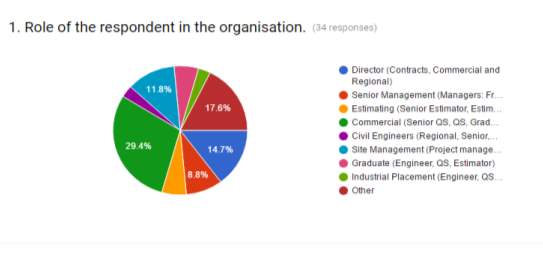
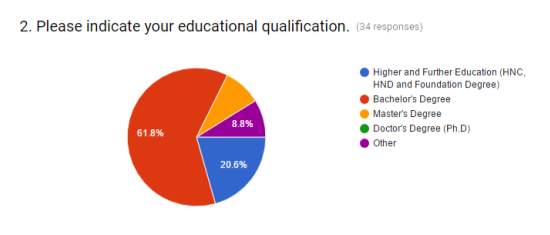
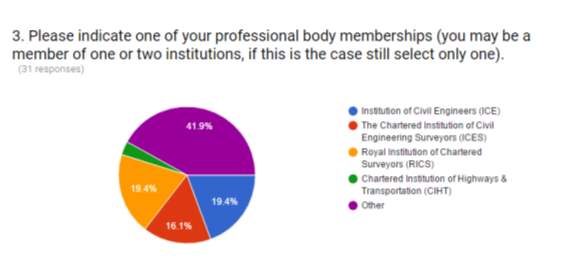
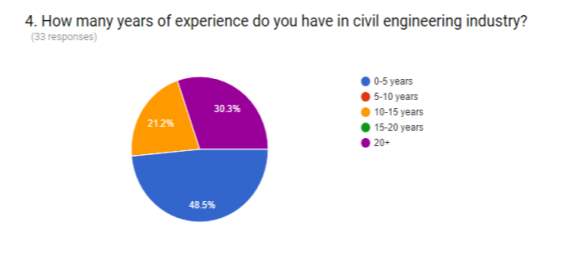


| Respondent 1: | “Working as a team”. |
| Respondent 2: | “Integrated efforts from the whole design and construction team to meet the project objectives”. |
| Respondent 3: | “Joined up working”. |
| Respondent 4: | “In theory it works well, but in industry, companies genrally work against each other, hiding costs and margins if they can”. |
| Respondent 5: | “Working together within a team”. |
| Respondent 6: | |
| Respondent 7: | |
| Respondent 8: | |
| Respondent 9: | |
| Respondent 10: | |
| Respondent 11: | |
| Respondent 12: | |
| Respondent 13: | |
| Respondent 14: | |
| Respondent 15: | |
| Respondent 16: | |
| Respondent 17: | |
| Respondent 18: | |
| Respondent 19: | |
| Respondent 20: | |
| Respondent 21: | |
| Respondent 22: | |
| Respondent 23: | |
| Respondent 24: | |
| Respondent 25: | |
| Respondent 26: | |
| Respondent 27: | |
| Respondent 28: | |
| Respondent 29: | |
| Respondent 30: | |
| Respondent 31: |
It does not happen enough, the industry is very combative
Collaborative working is when you work in a fully integrated team to achieve a common goal whilst sharing all the benefits equally amongst the parties involved.
Very good, when two main contractors enter a joint venture they can learn from one another in terms of h & s, commercial and construction.
In Construction, collaboration is still work in progress as many factors linked to delay in project completion are linked to lack of collaboration between the architects, contractors subbies and supplies.
I think collaborative work is key in achieving the team goals. It implies that team members learn from each other. In addition, it helps to gain additional efficiency in certain processes by dividing responsibilities.
Collaborative working is an excellent way to deliver projects but it requires equal buy in from both the client and contractor representatives
working together for a common goal
As long as all parties truly believe in it, the only way to go to work.
Only works if all parties buy into the philosophy
Team work
It’s not happening as much as it should in work places. Most project teams still have the perception of “one man for himself”. Which causes disfunctional projects deliverance.
common aim to deliver
It varies drastically depending on clients/organisations
Very important in construction
Working together
Working with another organisation as if they were a friend!
My preference is for a competitive tendering process almost every time. BEST PRICE
It benefits both organisations when working together to ensure their business model or project can work is a smooth process. By coming up with new and improved integrated services, share knowledge and information which benefits everyone involved. I believe it is the key for better communication within the working environment.
Collaborative working is the best method in obtaining results that are sustainable over a long period within this industry. It definitely works but needs all parties to buy into the idea. The key factor is trust.
Two or more teams working together to deliver an end product as effectively as possible to the benefit of both/all teams.
Enables decisions to be made easier and quicker, in turn benefiting the project as the quicker decisions are made the more opportunity there is to save money.
Client, Contractors and Designers working together to achieve best value end product with minimal dispute.
Collaborative working is a result of our and our Clients and suppliers behaviors as to how to go to work to support each other to ensure we all meet our needs.
Collaborative working needs to involve all parties and requires all parties wanting to be collaborative. This concept works when everything is going well, but cracks can quickly appear when risk and liabilities need to be shared.
One of the most important aspects in the industry. It helps develop an organisation, avoid problems and creates a movement.
True collaborative working is about understanding each others needs and desires and working together such that all parties achieve collectively what they have set out to achieve.
This dissertation proposal has been written by a student and is published as an example. See our guide on How to Write a Dissertation Proposal for guidance on writing your own proposal.
Cite This Work
To export a reference to this article please select a referencing stye below:
Related Services
View allRelated Content
All TagsContent relating to: "Civil Engineering"
Civil Engineering is a branch of engineering that focuses on public works and facilities such as roads, bridges, dams, harbours etc. including their design, construction, and maintenance.
Related Articles
DMCA / Removal Request
If you are the original writer of this dissertation proposal and no longer wish to have your work published on the UKDiss.com website then please:




